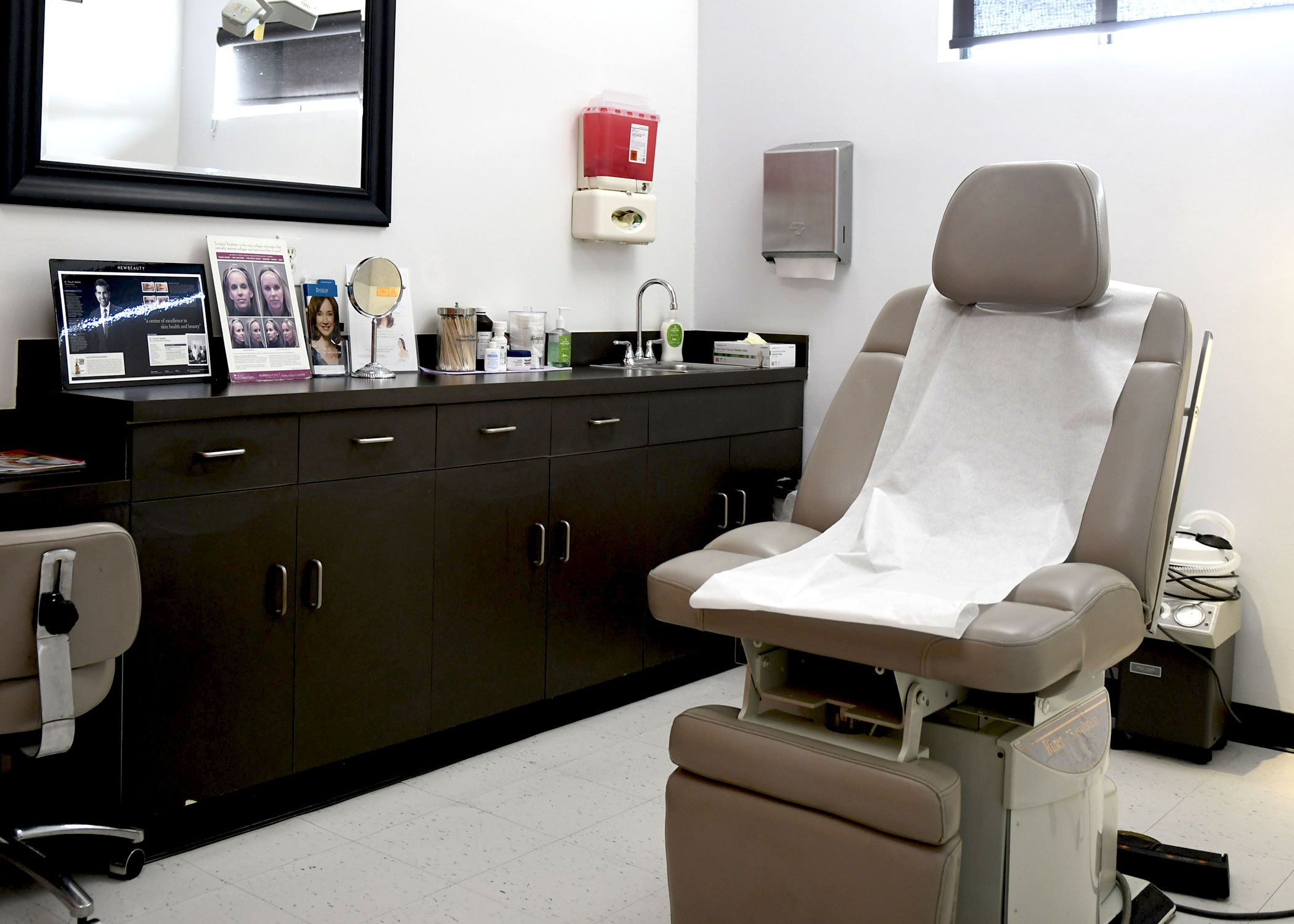When finding unusual looking skin lesions, individuals should consult with a certified and qualified dermatologist like Dr. Tony Nakhla and his team to determine if the growth presents a possible danger. Practitioners decide upon a course of treatment based on a physical examination and overall risk assessment. While many lesions are harmless, others may require medical intervention. Learn more about risk factors and causes of precancerous lesions before they worsen and develop into skin cancer at OC Skin Institute.
Atypical Melanocytic Lesions, Atypical Moles, or Dysplastic Moles
These lesions or moles are generally larger than common moles and display a variety of irregularities. Though benign in the majority of cases, the cells have the capability of becoming malignant. Generally classified as atypical moles, these lesions are also known as atypical melanocytic lesions, atypical melanocytic hyperplasia, or dysplastic mole. Visit a physician for a visual examination or biopsy to rule out the possibility of a cancerous mole.
Actinic Keratosis
These lesions appear in response to the damage that occurs on the skin from chronic sun exposure. Considered an early state of skin cancer, the traumatized areas are small, flat and rough like sandpaper. Fair skinned people are more susceptible to experiencing actinic keratoses that have up to a 10 percent chance of evolving into squamous cell cancer. Preventing the growths means using adequate protection while outdoors. Individuals who habitually spend a great deal of time in the sun should regularly check for lesions appearing on the face, ears and arms. When diagnosed, treatment may include topical chemotherapeutic medications, freezing and biopsies.
Melanoma-in-Situ
Also called lentigomeligna, melanoma-in-situ are considered possible precursors to melanoma. At this stage, the lesion is typically not invasive and grows only on the skin's surface. As the site may contain malignant cells, biopsies are often recommended. Especially if found on the face, more and more physicians are taking a more conservative approach by preferring to observe the site over time. When changes in the appearance of the mole becomes apparent, there is an increased concern that the lesion represents skin cancer, which may then necessitate excision or removal.
Atypical Fibroxanthoma (AFX)
Atypical fibroxanthoma is a rare type of tumor that develops on the ears or scalps of people as a result of chronic sun exposure. The lesions are more often seen in the elderly population. As the potential for malignancy and spreading are high, surgeons often perform a multi-step procedure known as Mohs micrographic surgery. The process entails removing the lesion and gradually eliminating surrounding tissues little by little until no malignant cells remain. Patients must also undergo follow-up observation for a minimum of two years after the surgery to ensure that the cells have not returned or spread.


